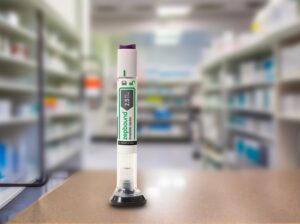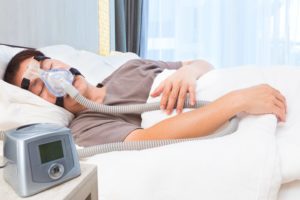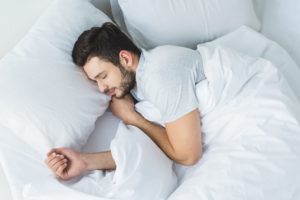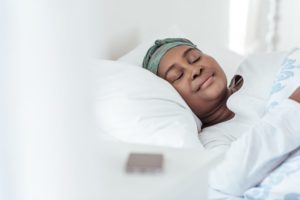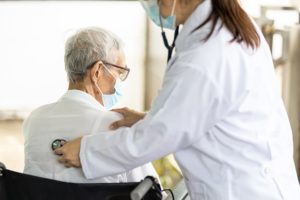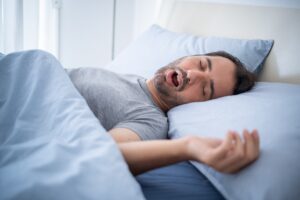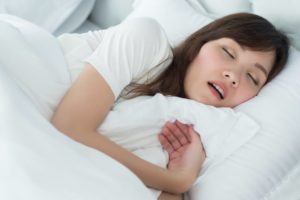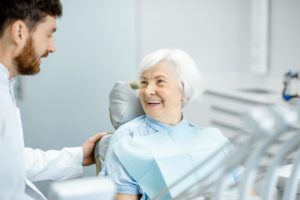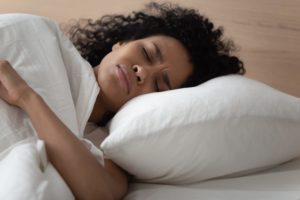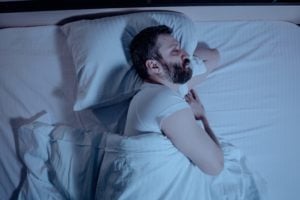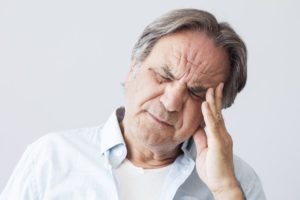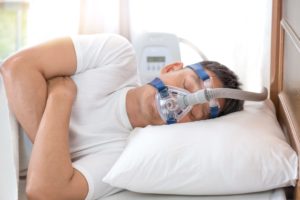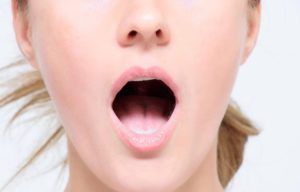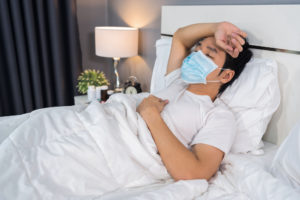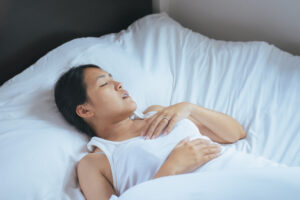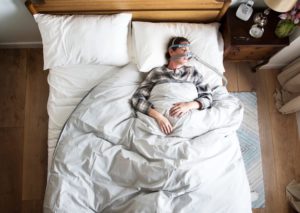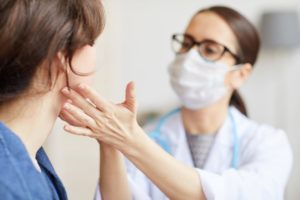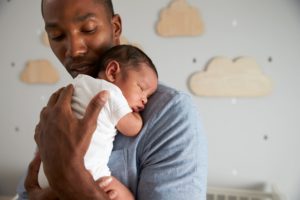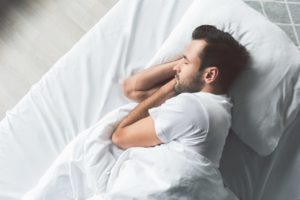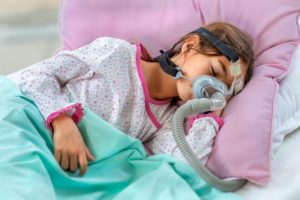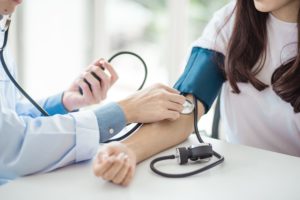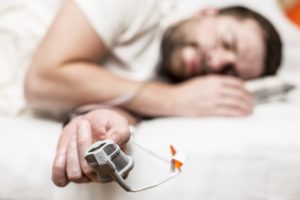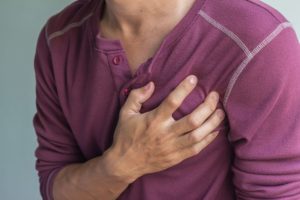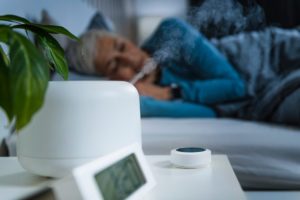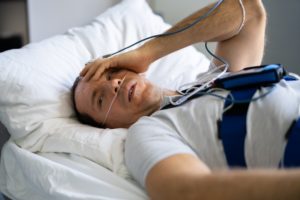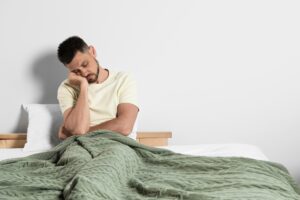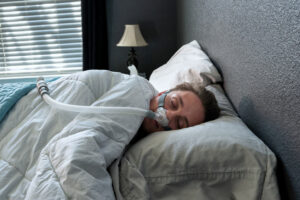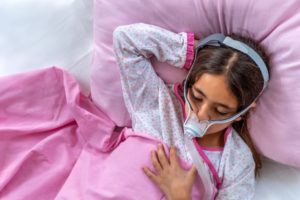When you buy through our links, we may earn a commission. Products or services may be offered by an affiliated entity. Learn more.
Hypopnea
- Hypopnea involves partially blocked airflow during sleep, leading to shallow breathing.
- Hypopnea is commonly linked to sleep apnea and other sleep-related breathing disorders.
- Diagnosis may include sleep studies to identify the severity and frequency of episodes.
- Treatment often involves lifestyle changes, weight loss, and CPAP therapy.
A hypopnea is a shallow breathing episode that occurs while people sleep. When a person experiences too many hypopneas during sleep, along with pauses in breathing called apneas, they are diagnosed with a form of sleep apnea.
Although experiencing a greater number of hypopneas than normal indicates a sleep-related breathing disorder, effective treatments are available. Learning more about causes, symptoms, and effects of hypopnea can make it easier to identify and treat sleep-disordered breathing.
Think You May Have Sleep Apnea? Get Help Today

our partner at sleepdoctor.com
10% off Home Sleep Tests
Buy Now“Truly grateful for this home sleep test. Fair pricing and improved my sleep!”
Dawn G. – Verified Tester
What Is Hypopnea?
Hypopnea is a common symptom of certain sleep-related breathing disorders, like obstructive and central sleep apnea. The technical definition of a hypopnea is 10 seconds or more of shallow breathing in which a person’s airflow drops by at least 30% . At the same time, blood oxygen levels also drop by at least 3% or 4%. The effects of a hypopnea event become more severe the longer it lasts.
In addition to hypopneas, people with sleep-related breathing disorders also experience apneas, or complete pauses in breathing, during sleep. If someone experiences an average of five or more hypopnea and apnea events per hour of sleep, they likely have a form of sleep apnea. In addition to symptoms like excessive daytime sleepiness and mood disturbances, an untreated sleep-related breathing disorder can increase the risk of heart attack, stroke, cardiovascular disease, diabetes, and liver fibrosis.
Types of Hypopnea
There are three types of hypopneas. All hypopneas are shallow breathing episodes, but because different types have different causes, they may require different treatment methods. However, it can be difficult for medical professionals to identify which type of hypopnea a person is experiencing.
- Obstructive hypopnea: When hypopnea events are caused by the partial blockage of a person’s airway, they are considered obstructive . These are commonly found in obstructive sleep apnea.
- Central hypopnea: Hypopnea events may also be caused by a reduced attempt at breathing rather than blocked airflow. These central hypopnea are common in central sleep apnea and can be caused by brain stem problems and some medications .
- Mixed hypopnea: When a person experiences hypopneas due to a reduction in both airflow and breathing attempts , they are considered mixed hypopneas. Mixed hypopneas are most common in a form of central sleep apnea that can develop in a person being treated for obstructive sleep apnea.
How Is Hypopnea Different From Sleep Apnea?
While a hypopnea is a period of shallow breathing, an apnea is a complete pause in breathing . Both hypopneas and apneas are considered breathing events. Sleep apnea is also a general term used to refer to several types of sleep-related breathing disorders.
A person is often given a diagnosis of either obstructive or central sleep apnea when they experience more hypopneas and apneas than what is considered healthy. The type of sleep apnea diagnosis given depends on the cause of the apneas and hypopneas.
While apneas are generally considered more severe than hypopneas, there is evidence that both carry similar risk factors for cardiovascular disease and other illnesses. Sleep experts note that there is currently no established clinical reason for differentiating between them.
Symptoms of Hypopnea
Like apneas, hypopneas can cause the symptoms that characterize sleep apnea:
- Loud snoring
- Excessive daytime sleepiness
- Feeling unrefreshed upon waking
- Waking up at night to use the bathroom
- Choking or gasping during sleep
- Morning headaches
- Sexual dysfunction
- Mood disturbances
- Chronic nasal congestion
- Weight gain
People with sleep-disordered breathing may disturb their partner’s sleep due to symptoms like snoring and choking. Anecdotal evidence suggests that sometimes, apnea and hypopnea symptoms are only diagnosed when the bed partner of a person who has the disorder complains about their snoring and prompts evaluation.
Causes of Hypopnea
Obstructive hypopneas occur in obstructive sleep apnea, when the airway is partially blocked during sleep. They may be caused by conditions that narrow the airway or cause throat tissue to become more prominent, such as obesity or hypothyroidism. Obstructive hypopneas can also occur because a person’s jaw shape or tonsil size causes a narrowed airway. When increased hypopneas occur in a child, it is usually due to the size of their tonsils or adenoids.
Central hypopneas occur among people who have central sleep apnea, because the brain briefly stops sending the body signals to breathe. In central sleep apnea, causes include damage to the brain stem and the use of medications like opiates . Recent arrival at high altitudes can also cause temporary central hypopnea symptoms.
Hypopnea Risk Factors
There are a number of risk factors that can make someone more likely to experience an increased number of hypopneas:
- Obesity
- Hypothyroidism
- Acromegaly
- Myotonic dystrophy
- Ehlers-Danlos syndrome
- Family history
- Short upper or lower jaw
- Male sex
- Smoking
Some of these factors, such as obesity or jaw shape, may directly cause hypopneas by narrowing the airway. However, factors like someone’s sex may increase their risk through other mechanisms.
Hypopnea Diagnosis
When a doctor suspects sleep-disordered breathing, they evaluate risk factors, ask questions about sleep history and general health, and possibly give an examination. However, a doctor is unlikely to conclude an increased number of hypopneas are occurring without first ordering a sleep study. Also known as polysomnography, a sleep study is the gold standard for diagnosing sleep apnea disorders.
A sleep study shows sleep specialists how many apnea or hypopnea events occur, which stage of sleep they occur in, how long they last, and other crucial information. Sleep studies also help health care providers determine if a person is experiencing obstructive or central sleep apnea.
Most sleep studies occur in specialized clinics, though some people use home sleep apnea testing. Home sleep apnea testing can be done in a person’s home, though they do not collect as much data as polysomnography. The American Academy of Sleep Medicine suggests that home sleep apnea testing only be used for people that face an increased risk of moderate to severe obstructive sleep apnea and are free from other health conditions.
Hypopnea Treatment
Doctors usually treat sleep-disordered breathing issues, which often include an increased number of hypopneas, with a combination of lifestyle changes and continuous positive airway pressure (CPAP) therapy. Lifestyle changes may include weight loss, reducing alcohol intake, changing sleeping position, or stopping smoking.
CPAP therapy is the preferred treatment for obstructive sleep apnea and is also often used to treat central sleep apnea. CPAP machines deliver pressurized air via a hose and mask during sleep, keeping the airway open and reducing hypopnea events or preventing them from occurring. Successful treatment with a CPAP machine can have a profound positive impact on quality of life, as well as reduce blood pressure levels and risk of cardiovascular disease.
In addition to these standard treatments, obstructive sleep apnea is sometimes also treated with an oral appliance or surgery. Oral appliances are devices that hold the tongue and jaw forward, opening up the airway. Several surgeries exist, many of which help shrink or remove airway blockages.

Still have questions? Ask our community!
Join our Sleep Care Community — a trusted hub of sleep health professionals, product specialists, and people just like you. Whether you need expert sleep advice for your insomnia or you’re searching for the perfect mattress, we’ve got you covered. Get personalized guidance from the experts who know sleep best.
References
14 Sources
-
Schulman, D. (2022, January 12). Polysomnography in the evaluation of sleep-disordered breathing in adults. In S. M. Harding (Ed.). UpToDate., Retrieved June 27, 2022,
https://www.uptodate.com/contents/polysomnography-in-the-evaluation-of-sleep-disordered-breathing-in-adults -
American Academy of Sleep Medicine. (2013, September 23). AASM clarifies hypopnea scoring criteria., Retrieved June 28, 2022 from
https://aasm.org/aasm-clarifies-hypopnea-scoring-criteria/ -
Saraç, S., & Afsar, G.C. (2020). Effect of mean apnea-hypopnea duration in patients with obstructive sleep apnea on clinical and polysomnography parameters. Sleep & Breathing = Schlaf & Atmung, 24(1), 77–81.
https://pubmed.ncbi.nlm.nih.gov/31197639/ -
Iber, C. (2013). Are we ready to define central hypopneas? Sleep, 36(3), 305–306.
https://pubmed.ncbi.nlm.nih.gov/23450900/ -
American Academy of Sleep Medicine. (2014). The International Classification of Sleep Disorders – Third Edition (ICSD-3). Darien, IL.
https://aasm.org/ -
Randerath, W. J., Treml, M., Priegnitz, C., Stieglitz, S., Hagmeyer, L., & Morgenstern, C. (2013). Evaluation of a noninvasive algorithm for differentiation of obstructive and central hypopneas. Sleep, 36(3), 363–368.
https://pubmed.ncbi.nlm.nih.gov/23450252/ -
A.D.A.M. Medical Encyclopedia. (2021, July 12). Central sleep apnea. MedlinePlus., Retrieved May 5, 2021, from
https://medlineplus.gov/ency/article/003997.htm -
Yang, X., Xiao, Y., Han, B., Lin, K., Niu, X., & Chen, X. (2019). Implication of mixed sleep apnea events in adult patients with obstructive sleep apnea-hypopnea syndrome. Sleep & Breathing = Schlaf & Atmung, 23(2), 559–565.
https://pubmed.ncbi.nlm.nih.gov/30343435/ -
National Heart, Lung, an Blood Institute. (2025, January 9). What Is Sleep Apnea?, Retrieved May 5, 2021, from
https://www.nhlbi.nih.gov/health/sleep-apnea -
Spector, A. R., Loriaux, D., & Farjat, A. E. (2019). The clinical significance of apneas versus hypopneas: Is there really a difference? Cureus, 11(4), e4560.
https://pubmed.ncbi.nlm.nih.gov/31281744/ -
Luyster F. S. (2017). Impact of obstructive sleep apnea and its treatments on partners: A literature review. Journal of Clinical Sleep Medicine: Official Publication of the American Academy of Sleep Medicine, 13(3), 467–477.
https://pubmed.ncbi.nlm.nih.gov/28095973/ -
Duning, T., Deppe, M., Brand, E., Stypmann, J., Becht, C., Heidbreder, A., & Young, P. (2013). Brainstem involvement as a cause of central sleep apnea: Pattern of microstructural cerebral damage in patients with cerebral microangiopathy. PloS One, 8(4), e60304.
https://pubmed.ncbi.nlm.nih.gov/23637744/ -
Muza, R. T. (2015). Central sleep apnoea-A clinical review. Journal of Thoracic Disease, 7(5), 930–937.
https://pubmed.ncbi.nlm.nih.gov/26101651/ -
Rosen, I. M., Kirsch, D. B., Carden, K. A., Malhotra, R. K., Ramar, K., Aurora, R. N., Kristo, D. A., Martin, J. L., Olson, E. J., Rosen, C. L., Rowley, J. A., Shelgikar, A. V., & American Academy of Sleep Medicine Board of Directors (2018). Clinical use of a home sleep apnea test: An updated American Academy of Sleep Medicine position statement. Journal of Clinical Sleep Medicine, 14(12), 2075–2077.
https://pubmed.ncbi.nlm.nih.gov/30518456/





